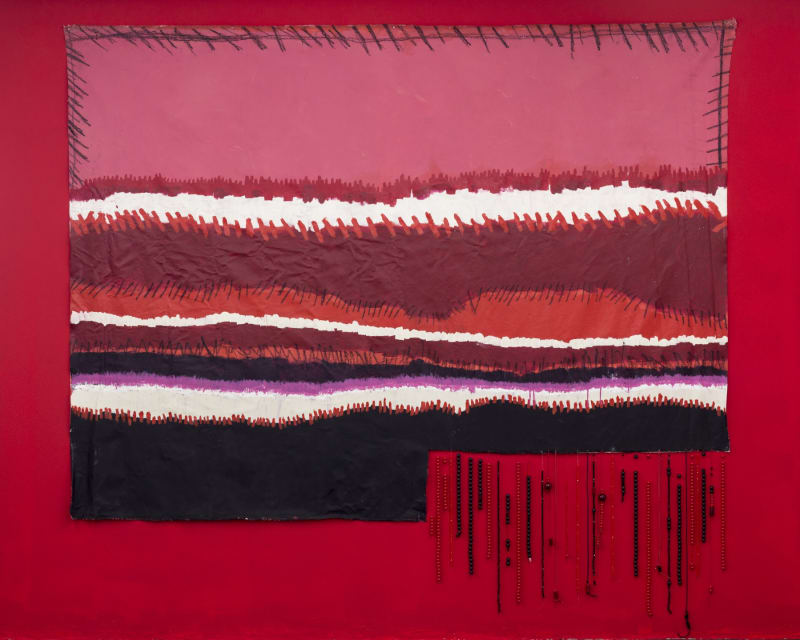A Noite nāo Adormecerá Jamais nos Nossos Olhos: Trovoa, Curated by Carolina Lauriano
Past exhibition
Overview
Baró is pleased to invite the first exhibition of Nacional Trovoa at the gallery - The Night Will Never Sleep in Our Eyes, curated by Carollina Lauriano.
With works by Aline Motta, Bruna Amaro, Caroline Ricca Lee, Gabriela Monteiro, Heloisa Hariadne, Igi Ayedun, Juliana Santos, Lidia Lisboa, Luiza de Alexandre, Lyz Parayzo, Mariana Rodrigues, Micaela Cyrino, Monica Ventura, Rebeca Ramos, Renata Felinto, Sheila Ayo, Val Souza and Yaminah Garcia, the exhibition brings together a set of paintings, photographs, assemblages, site-specific, performances, and installations - some of which have never been shown before, conceived for the show - and derives from the national call for artists proposed by the collective of women artists Trovoa. "The Night Will Never Sleep in Our Eyes" arises from the need to discuss the plurality of languages, media, and research being produced by racialized women across the country. The show is composed of works that were developed over a 4-week immersion and pre-selected works.
The Night Will Never Sleep in Our Eyes
The exhibition The Night Will Never Sleep in Our Eyes is part of the Trovoa collective's national call for proposals, which aims not only to map the production of racialized artists, but also to bring the protagonism of these bodies to the field of art. In the impulse to investigate the plurality of their research and artistic practices, the exhibition brings together a set of twenty-four works produced by eighteen women from different generations and different trajectories.
In this sense, the exhibition intends to interweave reflections about the production of these artists, inspiring a more open curatorial approach, in a search for individual and collective singularities. From this symbolic elaboration, the curatorial axes that point to the convergences among the works are derived: the search for one's own identity, institutionalised violence, and the ways of healing through one's experiences.
In the first room, we find works that elaborate experiences of the body when it discovers itself as a dissident body in a hegemonic society and the violence that follows it. Through the reconnection with the past, be it ancestral memories present in their origins or accessed through the unconscious - or even from the history of art itself - the artists present their own versions for a history that still does not contemplate everyone. Marking the transition between material and spiritual bodies is the immersion in the blue that emerges from the wound exposed on a site-specific wall. There, such cracking suggests not only what bleeds, but also the intention of healing from the reconnection with its origins. Finalising the exhibition, the last room emerges with an intimate proposal of these connections, whether with the spiritual, or by recognizing the path to be followed. And beyond focusing the conversation only on these themes, the exhibition focuses on the plurality of media and supports through which these subjects materialise: photography, sculpture, installation, site-specific, painting, and textiles are present in the show.
In times like the present, of crises of representativity, The Night Will Never Sleep in Our Eyes brings to the fore the desire to subvert and expand the narratives from micro politics that emerge as a possibility to redefine the future. Thus, in the transformative spectrum that art possesses, such experience of meetings, exchanges, and calls that the Trovoa circuit proposed nationally contribute to question the hegemonic discourses that surround not only society, but also the field of art.
Installation Views

